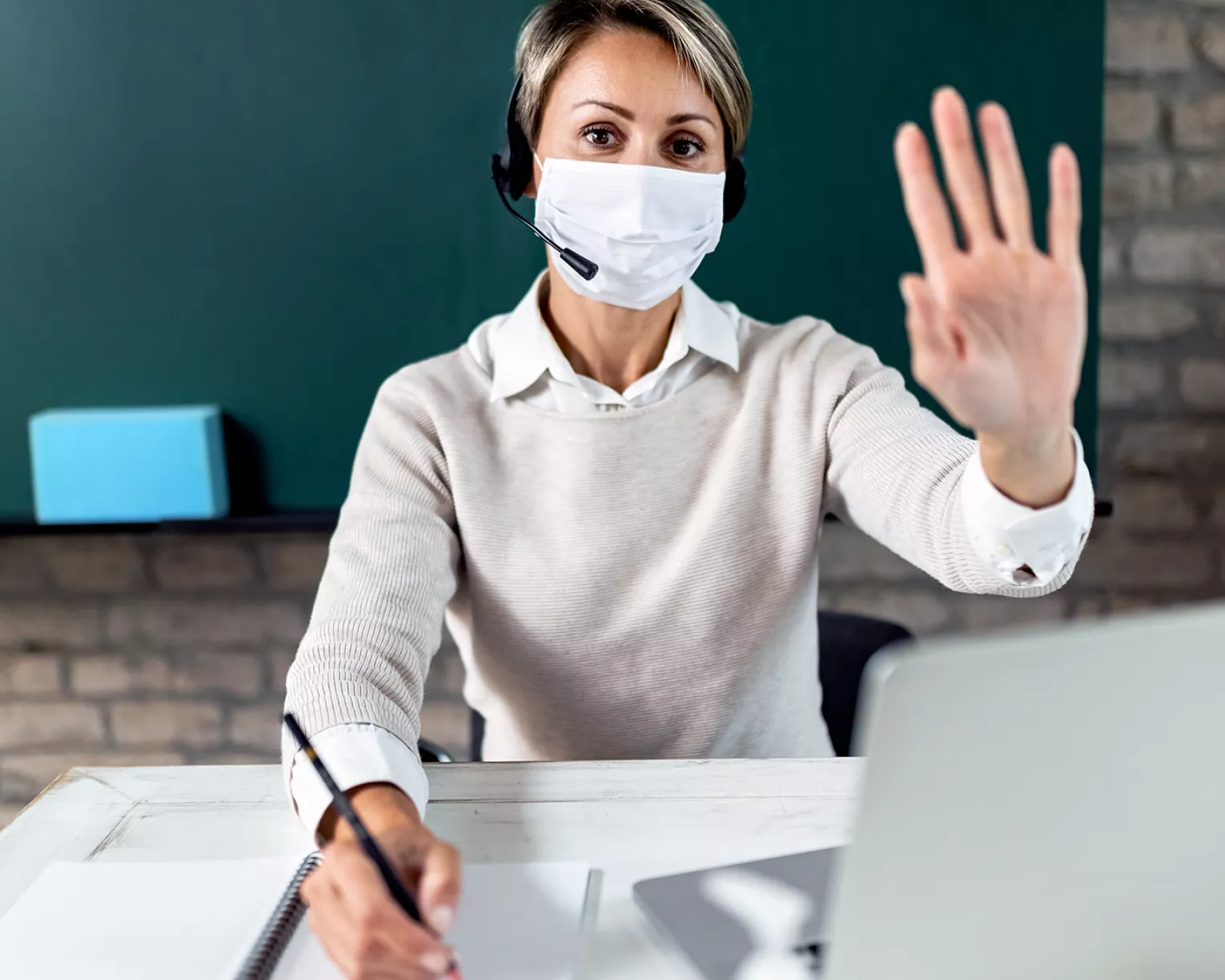The COVID-19 pandemic has brought about new challenges for educators as learning in many school districts has transitioned from in-person instruction to distance learning models that include combinations of in-person instruction and virtual learning. As a result, educators are faced with implementing new learning models and may be required to implement multiple models concurrently. To meet the academic, physical, social, and emotional needs of students, teachers must include supports offered by other professionals within their school or district in planning and implementation of distance learning. This resource provides an overview of different learning models, including the key features of each, terminology, common pedagogical practices, and examples of how other professionals can be included to support student learning.
Hybrid flexible or Hyflex
What is hyflex learning?
Hyflex learning is a modality of teaching that presents the components of hybrid or blended learning in a flexible course structure that gives students the option of attending sessions in the classroom, participating online, or doing both.
- Characterized by the flexibility of attendance modes.
- Lends itself more to synchronous learning.
- Students can participate either face-to-face or online in real-time (synchronous learning), at the time, place, and pace of the student’s choosing (asynchronous learning), or both.
- Technology is used to provide real-time online instruction, recorded instruction, facilitate learning activities, communicate with students, house resources and learning materials, and serve as a portal for receiving and returning assignments.
Blended
What is blended learning?
Blended learning is modality of teaching where students learn via electronic and online media as well as traditional face-to-face teaching.
- Combines face-to-face instruction and online instruction.
- Lends itself more to asynchronous learning.
- Students attend a partial schedule of face-to-face classes (synchronous learning).
- Technology is used to deliver additional content, facilitate learning activities, communicate with students, house resources and learning materials, and serve as a portal for receiving and returning assignments.
- The online learning is done at the time, place, and pace of student’s choosing (asynchronous learning).
Terminology
Cloud storage: An Internet-based computing model that allows you to store, manage, and share files online. Popular cloud storage-based platforms include Google Drive and Microsoft OneDrive.
Learning management system (LMS): A platform used to deploy and track online training. Uploaded content to the LMS is accessible for both face-to-face and remote learners.
Netiquette: The appropriate online social behavior. Click on the link for a resource that will help you get a sense of ways to provide this learning to your students.
Student response tool: A tool that is used to receive real-time, formative feedback on student understanding.
Synchronous and asynchronous learning: Two types of online learning formats. Synchronous learning activities occur in real-time with participants actively participating in the same online environment. Asynchronous learning does not occur in real-time; it includes learning and activities that students can complete on their own schedule.
Video conferencing: A technology that allows users in different locations to hold face-to-face meetings using video, audio, messaging, and other interactive capabilities.
Common Pedagogical Pratices for Hybrid Learning
While many pedagogical practices for hyflex and blended learning are similar, there are some key differences as hyflex depends on live instruction and blended relies on both recorded and live instruction. Because hyflex instruction relies more heavily on synchronous learning, formative assessments can include the use of real-time student response tools. Conversely, the more asynchronous nature of the blended learning model does not lend itself to the regular use of these tools. The companion documents, Rethinking the Classroom for Hyflex Learning and Rethinking the Classroom for Blended Learning, outline and describe these common pedagogical practices for virtual learning.
- Accommodate learning styles
- Active learning strategies
- Collaborative learning
- Differentiated instruction
- Flipped classroom model
- Partner/group activities
- Peer-to-peer interaction
- Project based learning
- Short recorded lessons
- Video communication
Hybrid Learning: Integrating the Expertise of Specialized Educators and Education Support Professionals in Distance Learning
The school community includes a range of administrators and staff who support students’ social, emotional, cognitive, and physical needs. The move from in-person instruction to online instruction does not eradicate the need for students to socialize, engage in physical activity, or access the services of social workers, counselors, nurses, paraeducators, content area specialists, instructional coaches, librarians, and others. Within both hyflex and blended learning models there are many opportunities to support instruction and build community by giving students a chance to connect with and interact with other professionals in your school.
Consider:
- Asking your librarian/media specialist to help choose resources to support learning goals, lead book talks, or engage with families to select extracurricular reading materials.
- Asking the physical education teacher for recommendations for short physical breaks during online instruction.
- Asking appropriate specialized instruction support personnel (SISP) and/or education support professionals (ESPs) to lead sessions on health and safety, social and emotional well-being, grief and loss, coping with stress, good hygienic practices, nutrition, bus safety, and other topics.
- Asking paraeducators, content area specialists, or instructional coaches to collaborate on supporting and differentiating asynchronous learning tasks and/or joining synchronous online sessions to support student learning.
- Collaborating with arts and music educators on activities and projects that provide ways to demonstrate knowledge through the arts.
Downloads
Suggested Further Reading
Join Our Movement


